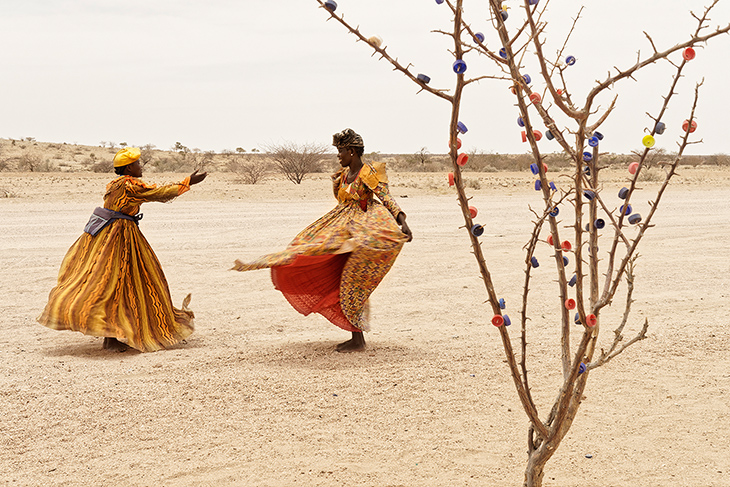
"Life is Them". Emsi Tjambiru and Beverly Tjivinde dance on the road near their craft stall to flag down tourist busses. C35 Khorixas district, Namibia. October 2017
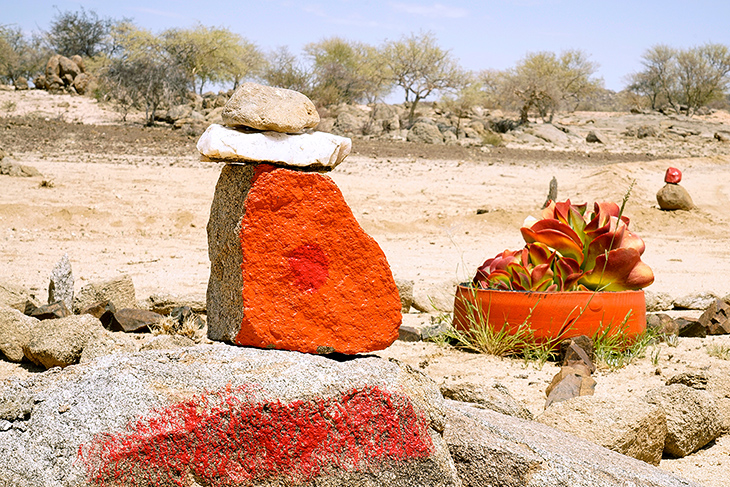
"Riverbed Reds". The //Garoëb family creates a garden for a campsite near the village of Okombahe -- situated on the Omaruru River -- and once regarded as the capital of the ǂNûkhoen (Damara) people. Dâures Constituency, Namibia. January 2019
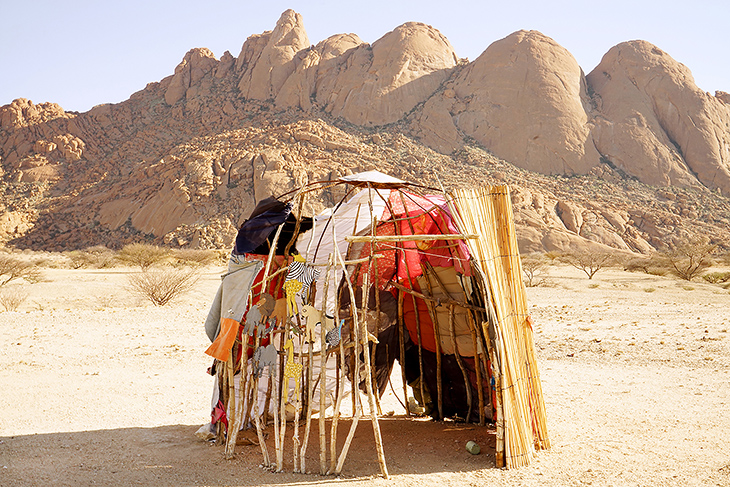
"Pontok Collage". A shelter beneath Pontok Mountain, ǂGaingu Conservancy, Namibia. July 2018
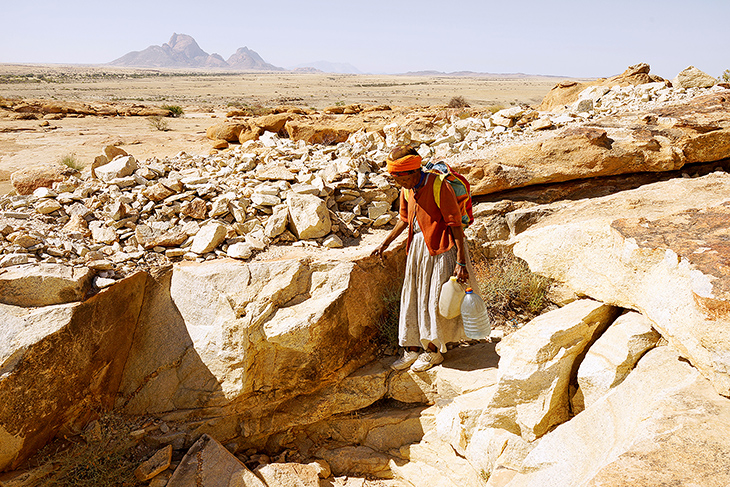
"The Water Carrier #3". Liskien Gawanas on her way from an aquifer, a daunting journey on foot up a rock sentinel and a gruelling descent underground. In 2016, owing to a three-year drought, the aquifer dried up. Erongo Region, Namibia. June 2015. [2021: The drought lasted 7 years]
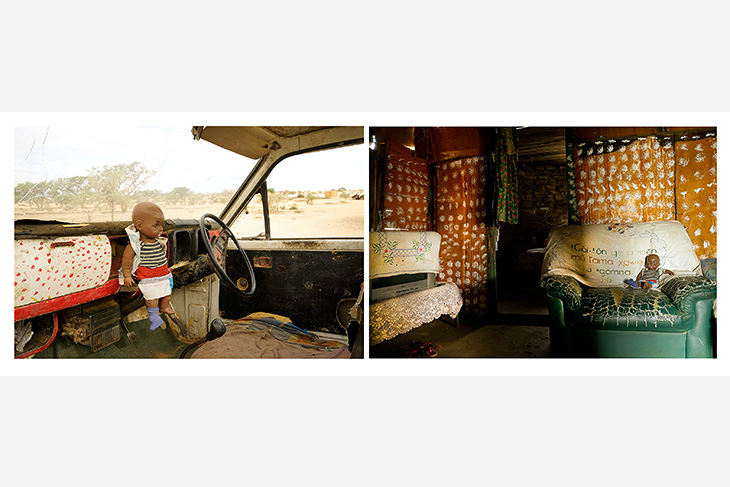
"Diptych: Spotted Jalopy".Edgar !Uri-khob uses his vehicle, decorated by his mother Susanna, to collect water and wood for the community; Susanna’s Armchair. Black Ranch, Pos #3, Spitzkoppe, Namibia. December 2018
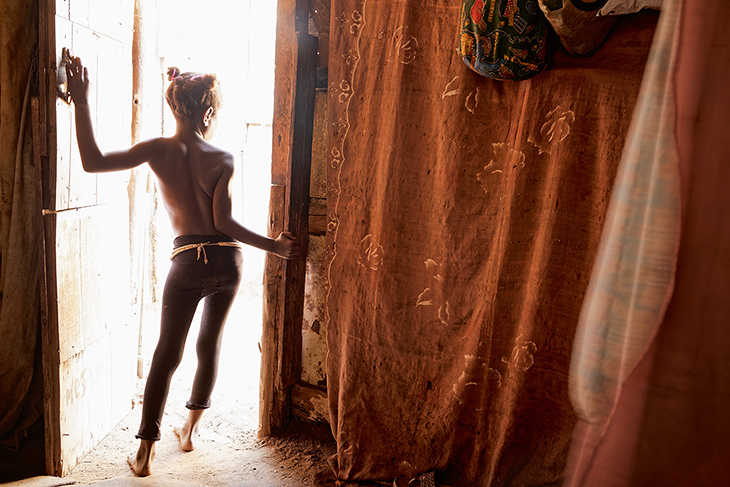
"The Bedroom". Maria (the name she has chosen) at the entrance of her bedroom. She wears a string of beaded ostrich eggshells around her waist, a traditional Ovambo custom for children before they reach puberty. DRC informal settlement, Swakopmund, Namibia. June 2015
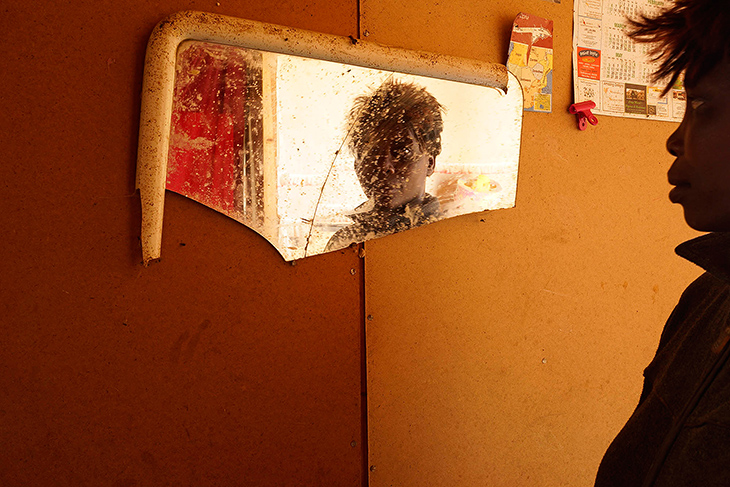
"Shard". Having recently migrated from northern Namibia with her two young daughters, Magreth Kambalala has moved off the garbage dump to join a woman’s project in the DRC informal settlement. Swakopmund, Namibia. May 2015
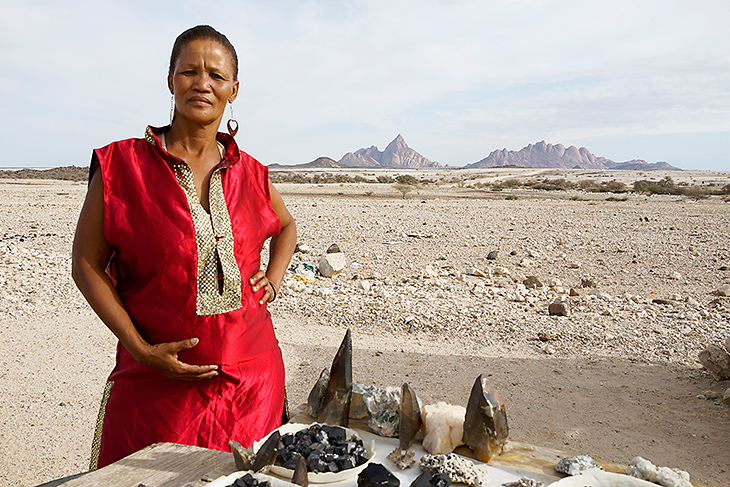
"Birthday". Dorothea Papier on her birthday. Black Ranch Pos #2, Spitzkoppe, Namibia. February 2016
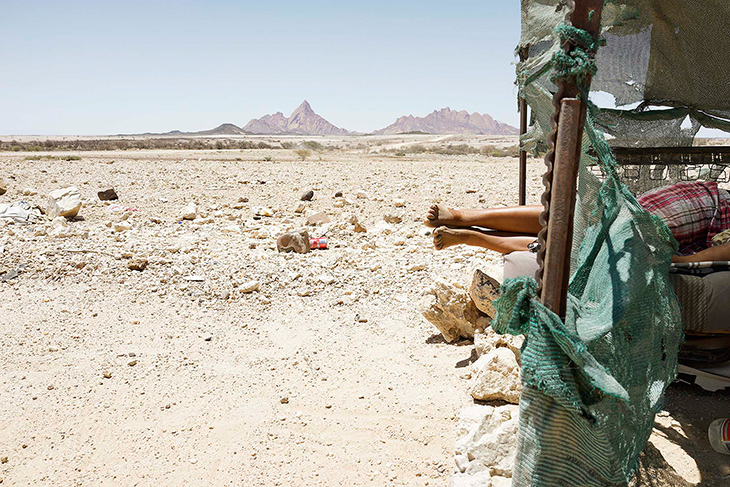
"Horizontal". Dorothea Papier and her baby daughter Elneray take a nap in the shade of their roadside stall. Black Ranch Pos #2, Spitzkoppe, Namibia. January 2016
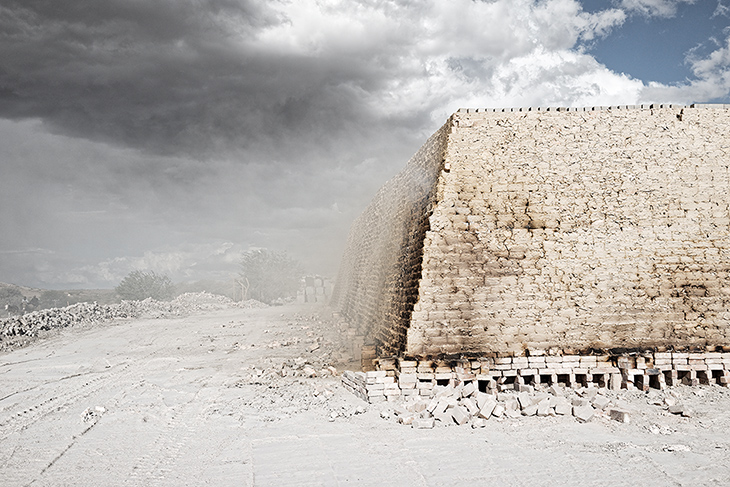
"Portents". Acid rain at the brick factory. Uis, Namibia. March 2015
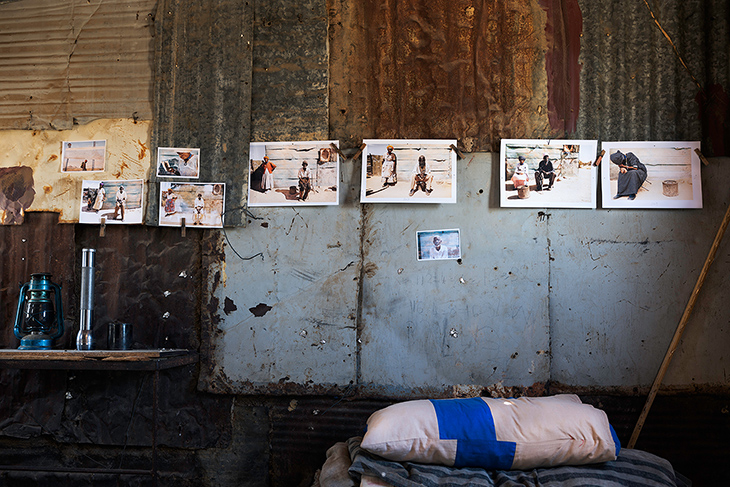
"Memory, Identity". My prints of Liskien Gawanas and Langman Gawanab photographed over the past six years hang in their shack. She mourns his recent death. ǂGaingu Conservancy, Namibia. January 2019
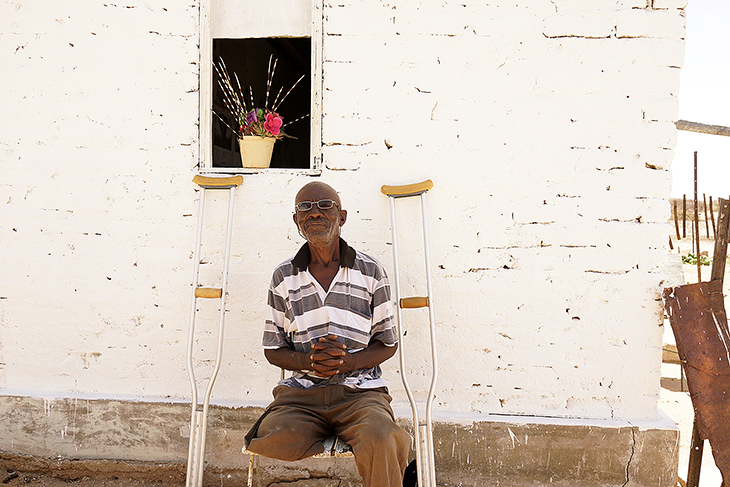
"Christmas Tree". Frederich Kasupi’s leg was recently amputated -- the long-term effects of untreated diabetes.
Farm Black Ranch Pos#3, Spitzkoppe, Namibia. December 2016
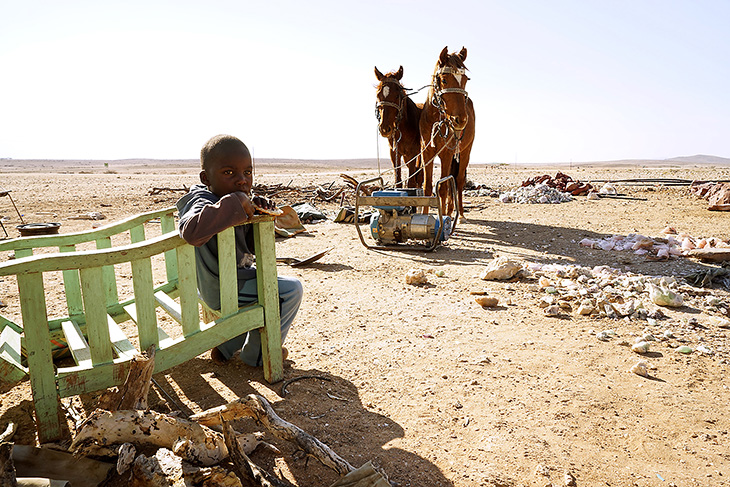
"Green Chair Waiting". Young Reinhart Dausab watches over the horses while the riders buy rose quarts stones from his grandfather. Septa Aes Farm, Erongo Region, Namibia. July 2017
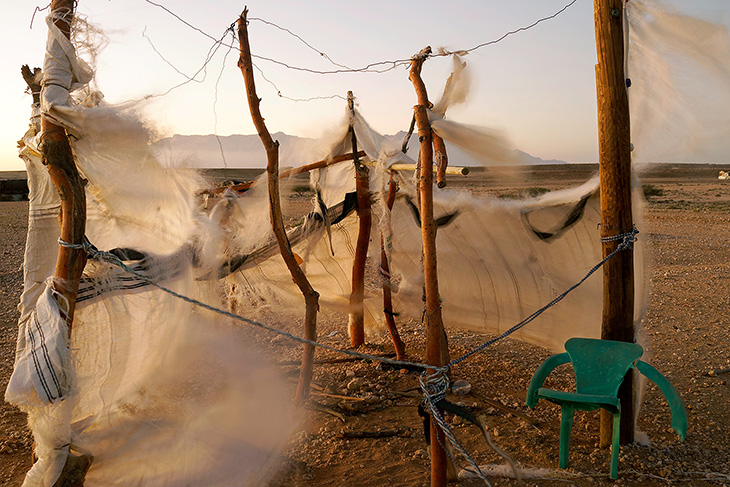
"Sugar Bags". To shelter her grandchildren from the sun, wind and dust, Elsie !Uxam erected a ‘kindergarten’ near her roadside stall using discarded ‘sugar bags’. The ubiquitous polypropylene bags are much sought after for building shacks despite their rapid disintegration in the harsh climate. It is a common practice for parents or single mothers to leave their children to be raised by their grandparents in rural areas while they move to urban areas in search of work. Septa Aes Farm, Erongo Region, Namibia. January 2016
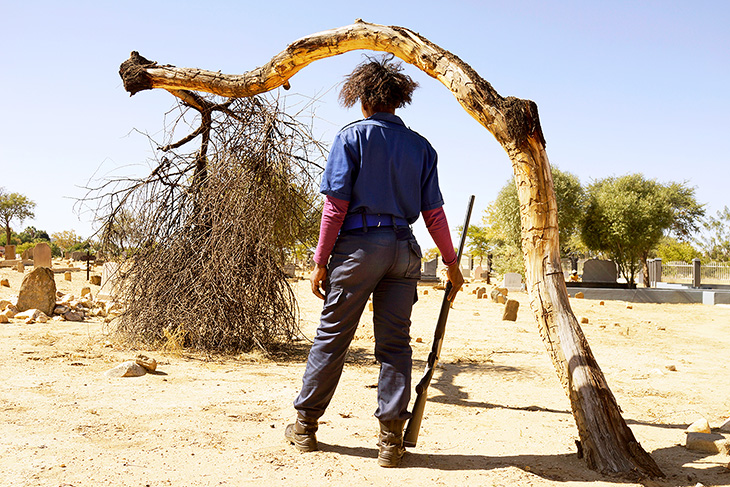
"Cemetery Guard #2". A security guard at Windhoek’s Old Location Cemetery protects this national monument “In Memory of our Heroes and Heroines of 10th December 1959 – Martyrs of the Namibian Revolution” who refused to move to the new government housing settlement of Katutura (Otjiherero: “The place where we do not want to live”). Namibia. June 2016
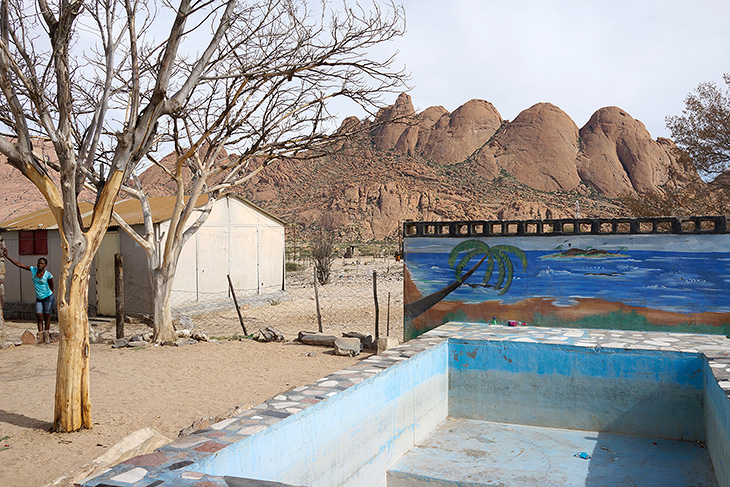
"Empty Dreams". Once a German trading post, the farm Spitzkopje became part of ‘Damaraland’ during apartheid years. Today it is part of the ǂGaingu Conservancy under the !Oe-#Gan Traditional Authority. Spitzkoppe Village, Namibia. February 2017
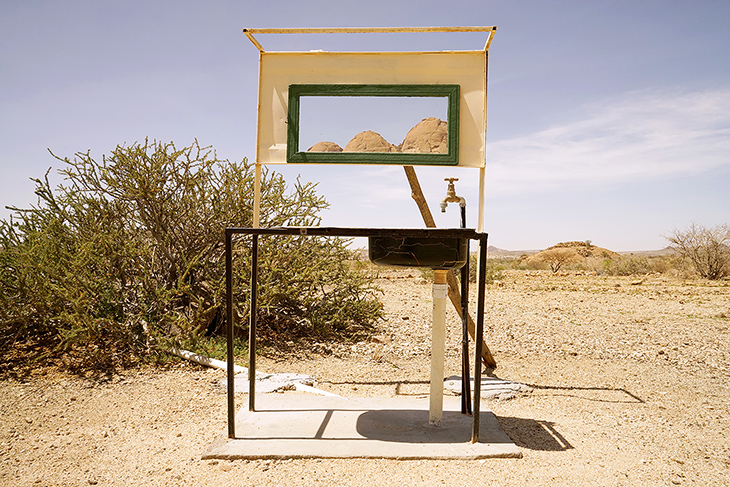
"Tapping In". Framing Pontok Mountain, the washstand serves a newly erected Damara Cultural Village, empty of visitors due to Covid. Pontok Mountain, Spitzkoppe, Namibia. January 2021
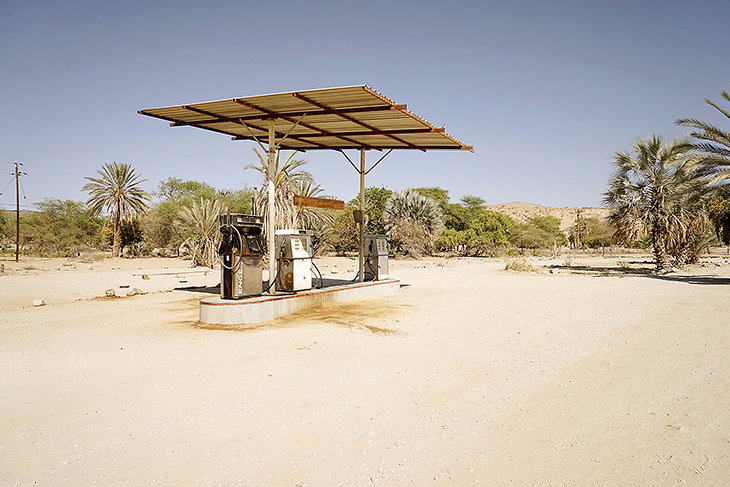
"The Petrol Pump". Sesfontein, Kunene Region, Namibia. October 2017

"Wheat and Tobacco". Erica Ganuses. Sesfontein, Kunene Region, Namibia. October 2017
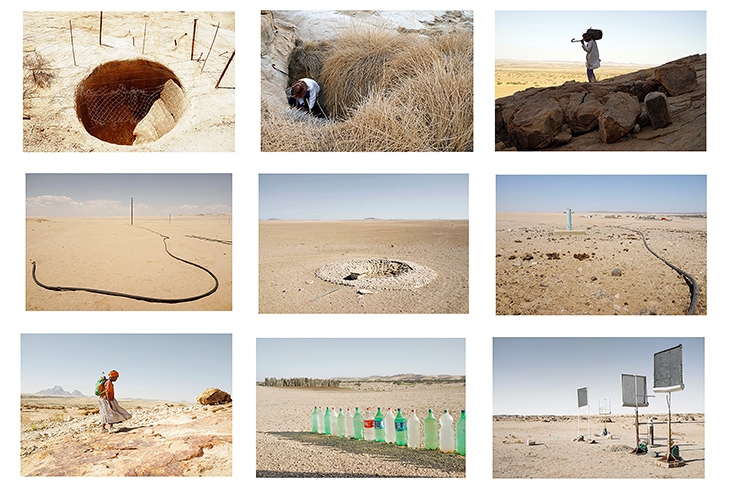
Nonatych: "ǁGam (Water)". Namibia, with its history of repeated drought and failed dreams, is constantly challenged by modern-day needs for water. These photographs, set against a harsh backdrop that portrays the land, examine the extraordinary means by which the inhabitants invent methods for collecting the life-sustaining fluid. Various locations in the Namib Desert. 2014–2017
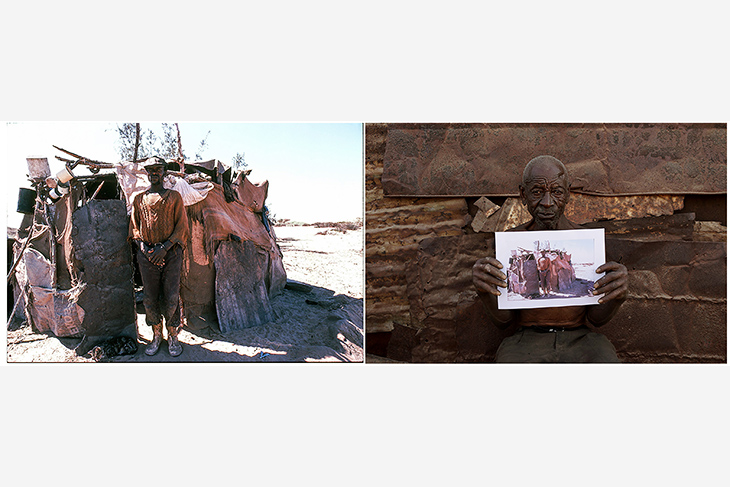
Diptych: "Time Gone By". Bethuel Xoagub, a Topnaar (ǂAonin), reflects on a hard life from the time I photographed him harvesting !Nara melons in the Kuiseb River almost 40 years ago…1978 / 2017
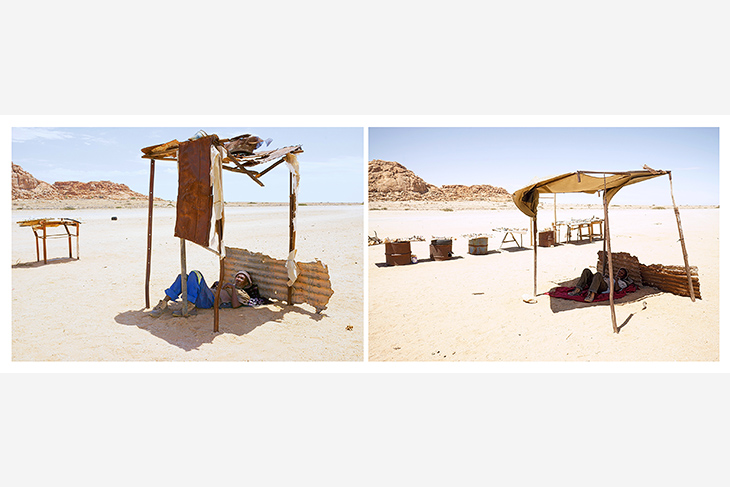
Diptych: "Waiting". Emanuel Kaibeb rests at a taxi shelter during the heat of day before setting off with his suitcase on a weeklong hike in the surrounding volcanic rocks in search of tourmalines. Born in Otjimbingwe, he moved to Klein (small) Spitzkoppe 30 years ago and built himself a tin shack where he still resides in abject poverty. ǂGaingu Conservancy, Namibia. January 2015/December 2017
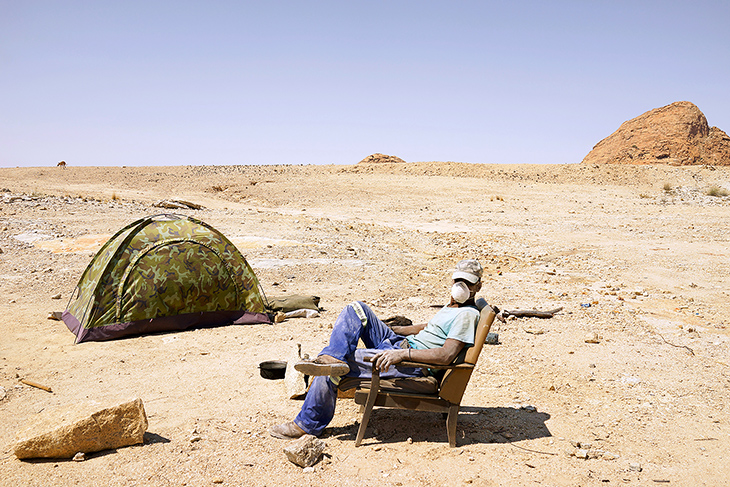
"Armchair Comfort". A miner of semi-precious stones camps amidst the small inselbergs around the Spitzkoppe Mountains, Namibia. April 2016
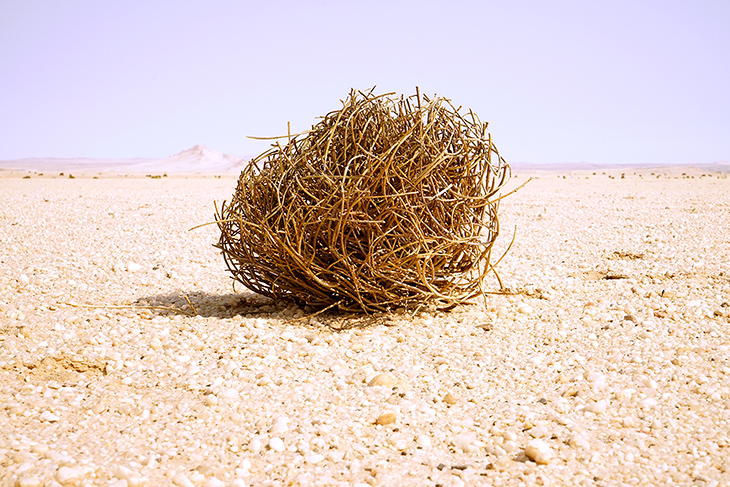
"Still Point". A "tumble weed" rests in the Namib Desert. September 2018
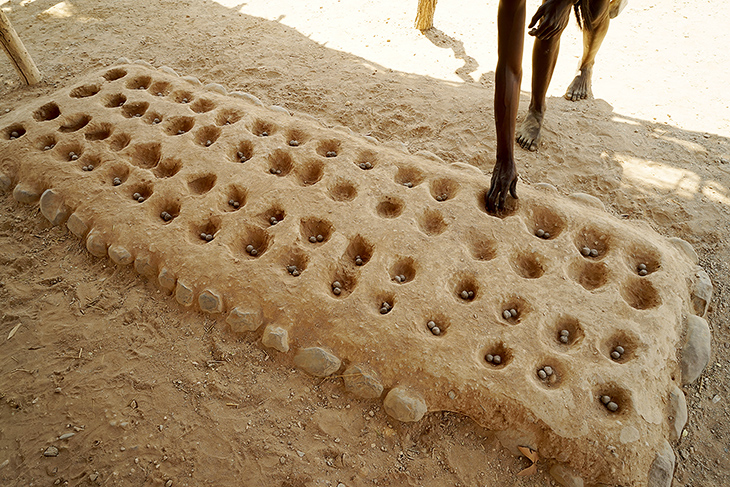
"ǁHus (Hole)". A traditional 19thC game played across the continent (names differ by country), originating from the Arabic word Mankala. The holes represent corrals, the seeds are symbolic of cattle and cows and the player fights for supremacy by ‘stealing’ the opponent’s cattle (seeds). ‘Experience Damara Culture Living Museum’, Khorixas, Namibia. October 2017
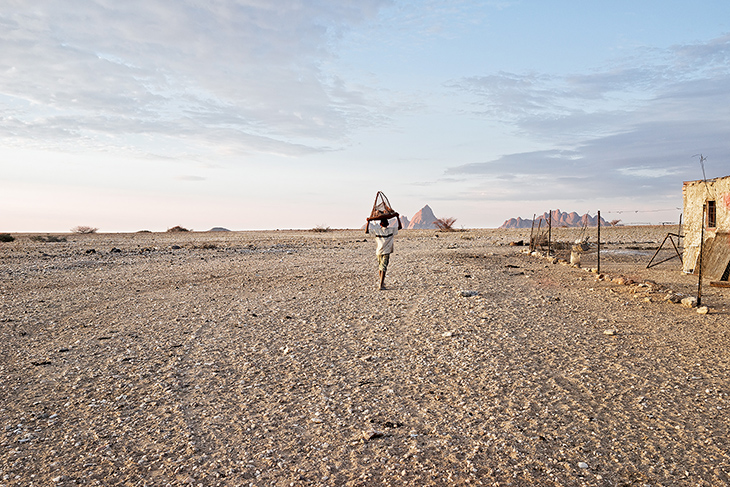
"Parallel Peaks". Liam !Uri-Khob carries a cage of baby chickens home for the night, to warmth and safety from wild cats. The village of Spitzkoppe, beneath the distant inselberg ǂGaingu (the local name for Spitzkoppe), is where Liam and his siblings attend boarding school, paid for with chickens and goats raised by their widowed mother. Farm Black Ranch Pos#3, Erongo Region. 9 January 2015
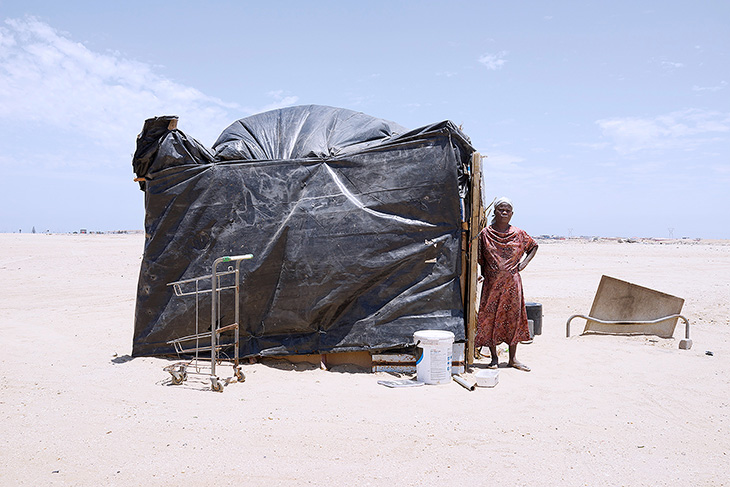
"Trolly". Alexandrine Xoagub. DRC informal settlement, Swakopmund, Namibia. November 2014
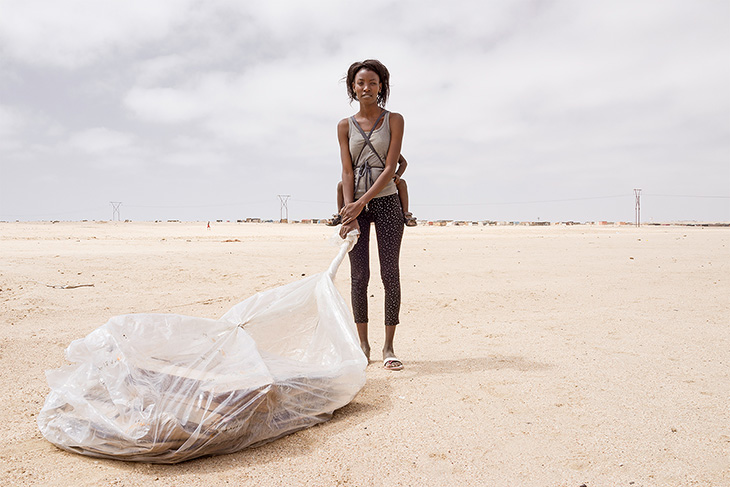
"Migrant Mother". Ashanti Gaises drags a bag of cardboard boxes from an illegal dump on the outskirts of town to the DRC informal settlement. Swakopmund, Namibia. March 2014
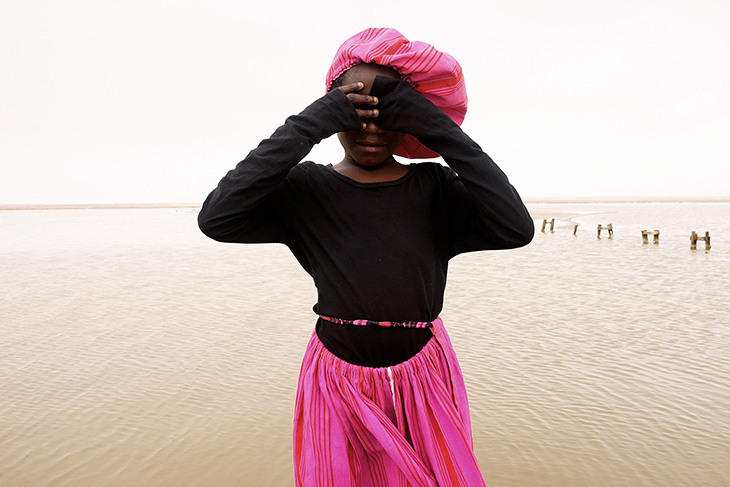
"Ovawambo". Maria (the name she has chosen), on a picnic at the salt pans, wears her traditional Oshiwambo costume for the rare outing. Swakopmund, Namibia. October 2016
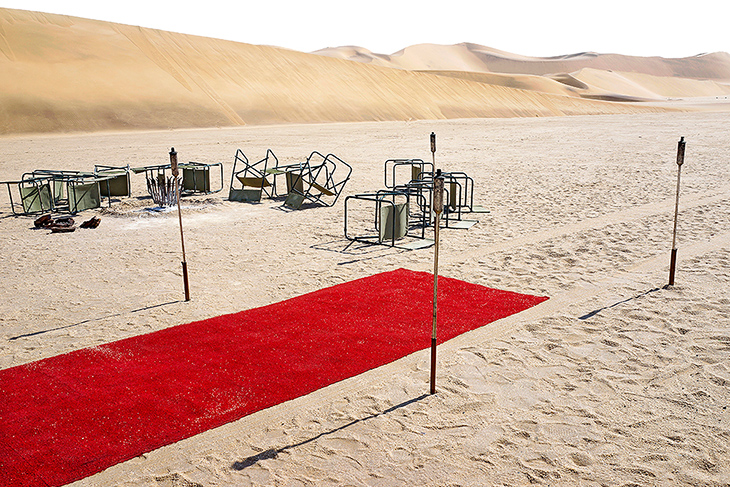
"Embodying Hope". A morning in the sand dunes. Dorob National Park, Namibia. April 2015
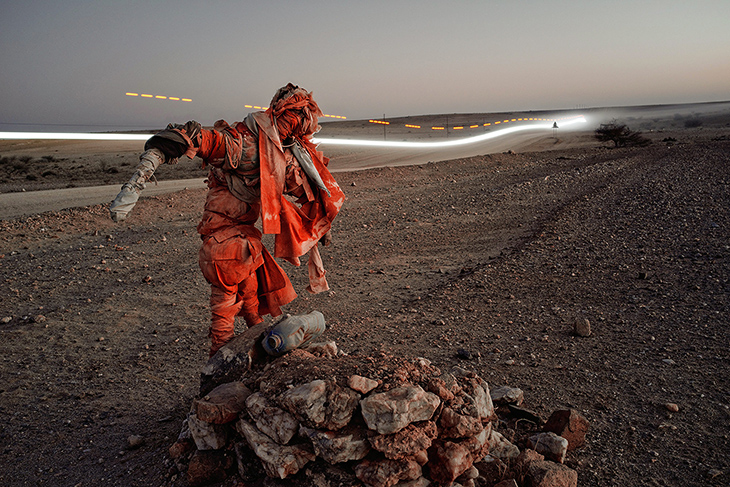
"The Fury Road". Tattered by wind and burnt by the sun, an effigy made by Tolikie Dausab is meant to attract buyers/tourists to his pile of rose quartz stones on the side of the road. A road grader returns to camp for the night. Uis District, Namibia. August 2015 [At the end of this road, Mad Max Fury Road was filmed]






























